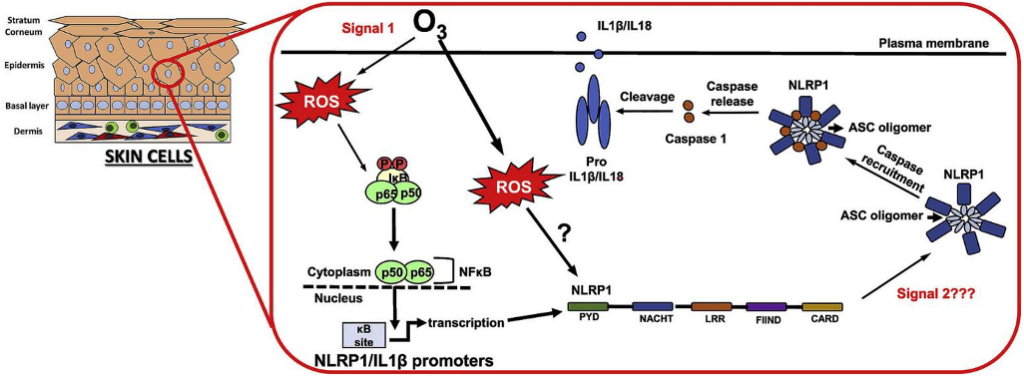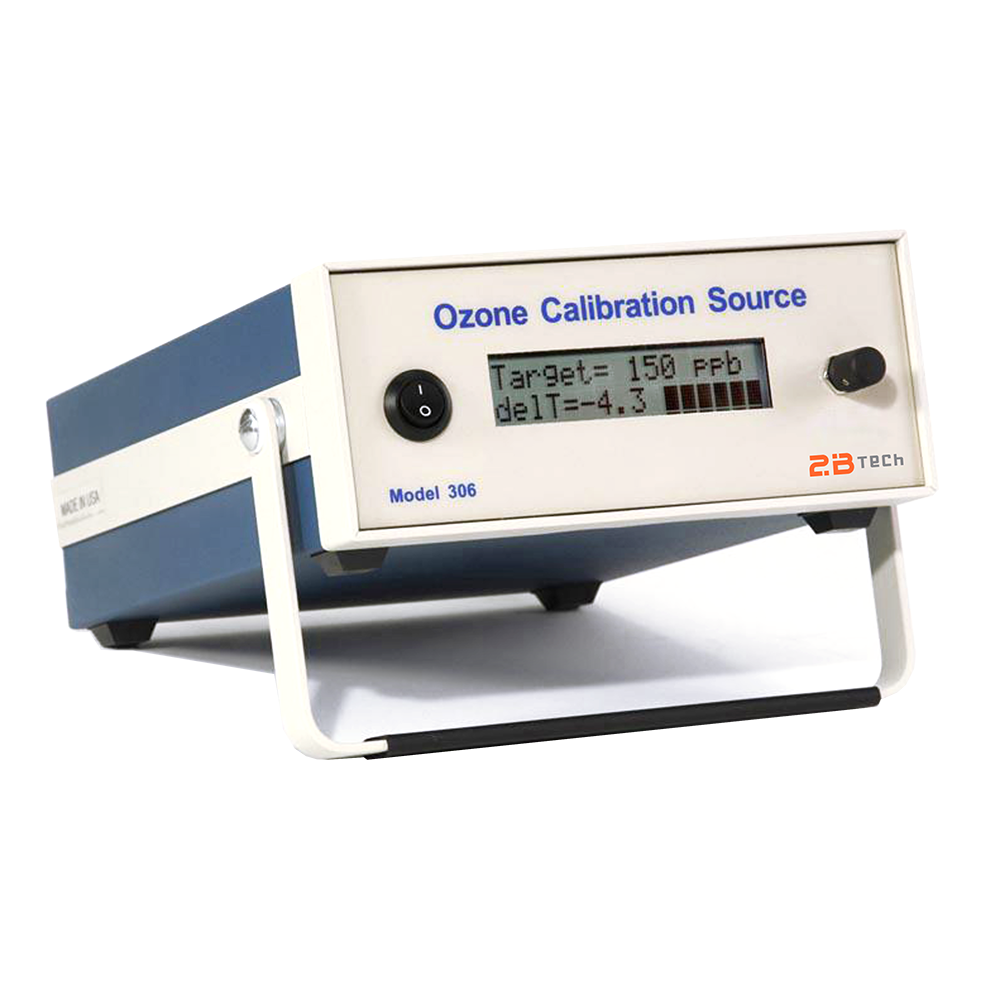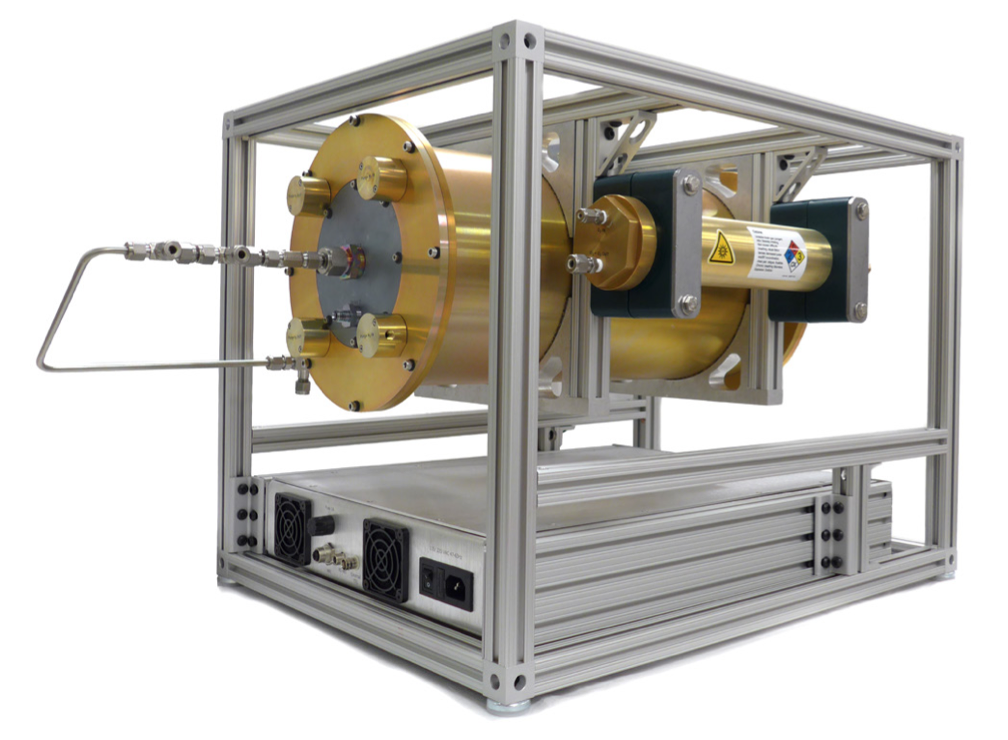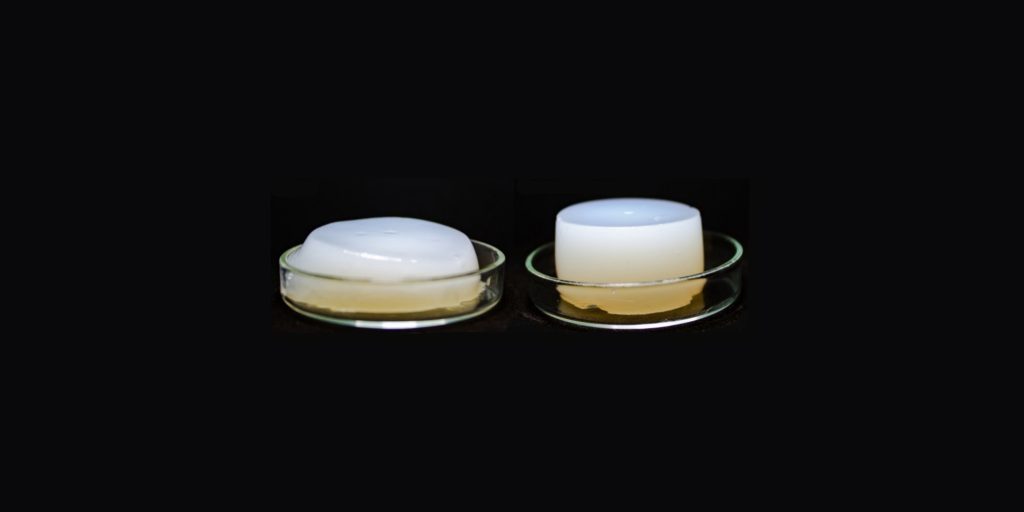Researchers from North Carolina State University, the University of Ferrara, JP Therrien Consulting LLC, and Kyung Hee University Investigate the Role of Ozone in Inflammatory Skin Conditions
The Problem: Tropospheric ozone (O3) is a toxic air pollutant that can reach concentrations as high as 0.5 ppm (500 ppb) in heavily polluted cities. Previous studies have demonstrated that elevated ozone has an adverse effect on skin physiology. Exposure to ozone over a long period of time can cause oxidative damage, skin inflammation, and an increased rate of skin aging. A correlation has been established between ozone exposure and skin conditions such as atopic dermatitis, psoriasis, acne, and eczema. The inflammasome, a newly discovered multiprotein complex, has been linked to tissue inflammation and inflammatory skin conditions.
Inflammasomes are responsive to and potentially activated by ozone and other reactive oxygen species (ROS). It’s hypothesized that ROS-induced activation of the inflammasome complex could explain the mechanism behind the skin conditions associated with O3 exposure.

The Solution: Researchers exposed various types of skin samples to 0.4 ppm (400 ppb) O3 and studied the influence of the ozone on inflammasome activation, with the aim of understanding the connection to inflammatory skin conditions. A Plexiglas chamber housed the skin samples. The Model 306 Ozone Calibration Source along with an electrical corona arc discharge generator were used to produce the ozone. The skin samples were exposed to ozone for 4 hours and subsequently analyzed over a 24-hour period.
Inflammasome activation was then compared to a control group of skin samples that were not exposed to ozone.

Inflammasome activation in skin biopsies after exposure to 0.4 ppm of ozone
Results: Ozone exposure was shown to trigger activation of the inflammasome in all of the different types of skin samples that were tested (figure above: bottom row showing enhanced immunofluorescence at 0, 6, and 24 hours after ozone exposure, compared to controls in top row). Inflammasome activation due to ozone caused increases in the protein levels of the main inflammasome complex. This was shown to cause increases in skin inflammation, thereby suggesting a mechanism by which air pollution plays a role in causing inflammatory skin conditions.
Click here to access the full research paper:
https://doi.org/10.1016/j.freeradbiomed.2019.11.031
The Bottom Line: Whether you are looking for an ozone generator for a research project or a portable ozone transfer standard to carry out field calibrations of analyzers, the Model 306 is right for you. The device uses the photolysis of molecular oxygen by 185 nm light to create highly stable ozone concentrations between 30 – 1,000 ppb. The calibrator also has the ability to generate air free of ozone for zero checks. The calibrator does not require a photometer to generate accurate ozone concentrations, making it possible for the Model 306 to be small, lightweight, and portable.Please reach out to 2B Technologies to discuss using the Model 306 for your application.





